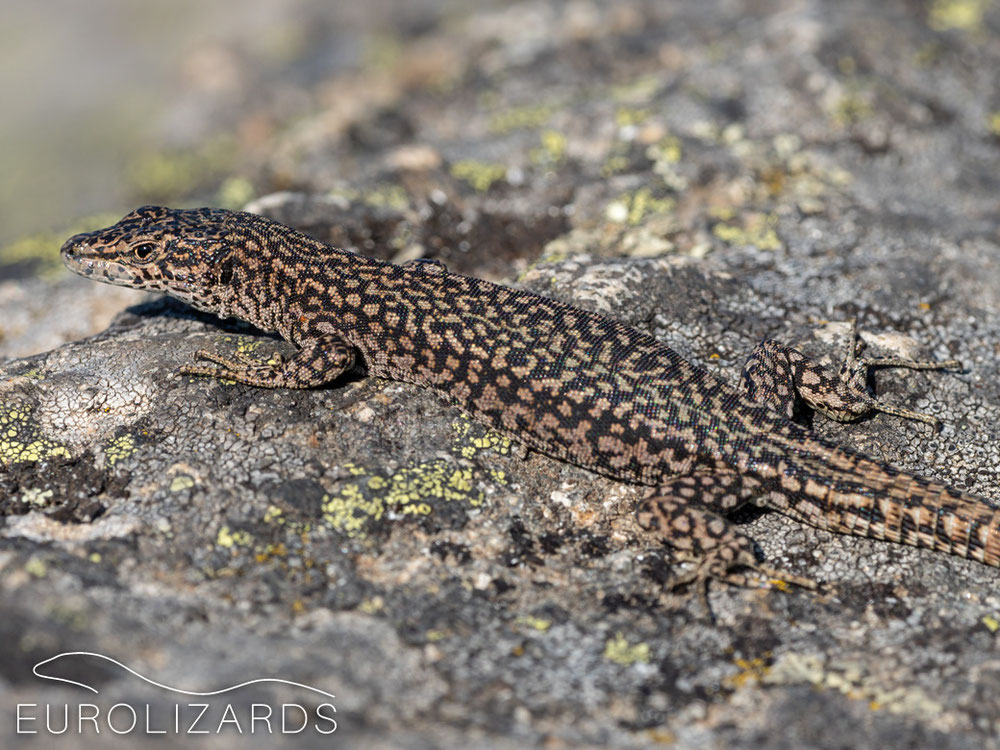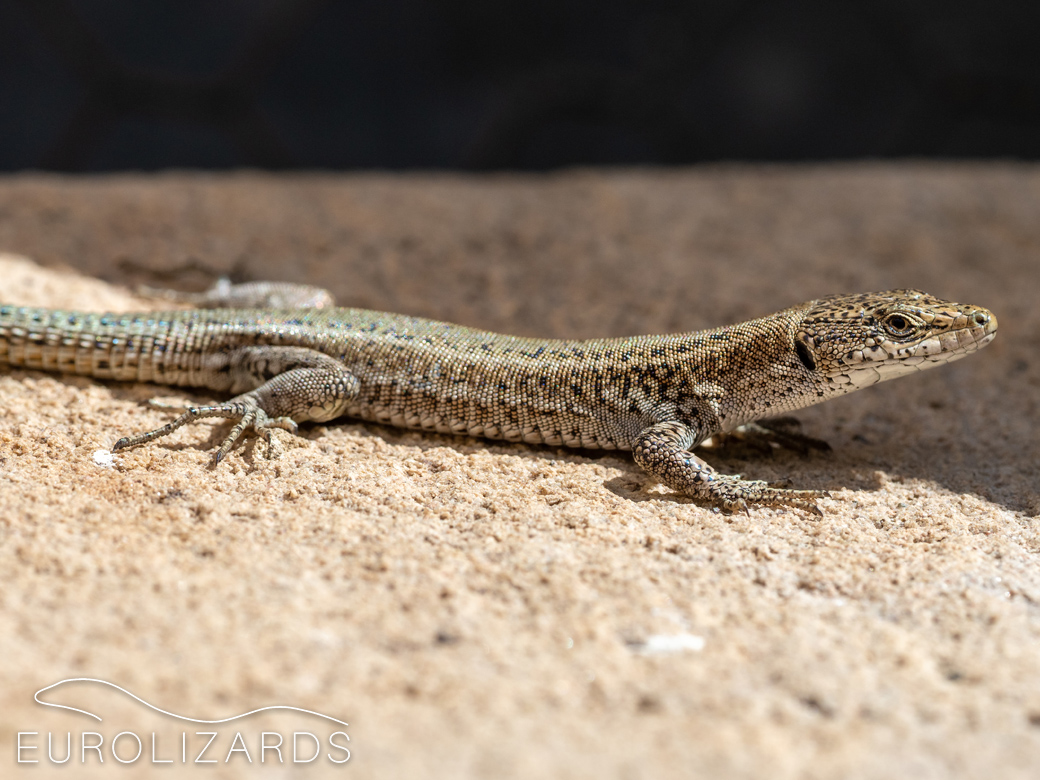Podarcis lusitanicus - "Lusitanian Wall Lizard"

Podarcis lusitanicus has formerly been regarded as a subspecies of Podarcis guadarramae but is now acknowledged as separate species due to genetic analysis. It so far has no common name - however, "Lusitanian Wall Lizard" would be possible. It occurs from the Cantabrian Mountains over Galicia and Northern Portugal to the Serra da Estrela in the South. For distribution range see map at Podarcis hispanicus.
These lizards even occur in rocky habitats with hardly any vegetation. Some populations have flat heads and strongly elongated snouts which allow them to hunt for insects in small crevices. In these cases, they resemble to rock specialists like Archaeolacerta bedriagae. This demonstrates the high morphologic plasticity of the genus Podarcis.
Podarcis lusitanicus differs from other Iberian Podarcis species by its flattened head and elongated snout. It has contact zones or overlapping ranges with the following species:
- Podarcis lusitanicus and Podarcis guadarramae can best be distinguished by locality - in the contact zone of both species (Spanish-Portuguese border in the Salamanca and Cáceres area), separation of the two species by external characters may be impossible. However, males of P. guadarramae from Central Spain frequently show broad dark supradorsolateral stripes whereas males of P. lusitanicus usually show a dark dot or net pattern on their backs.
- Podarcis virescens, Podarcis carbonelli and Podarcis liolepis: These species frequently show bluish outer ventral scales which lack in Podarcis lusitanicus and have shorter heads.
- Podarcis bocagei: This species has deeper heads and blunter snouts than Podarcis lusitanicus.










EUROLIZARDS - The Home of European Lizards! © Birgit & Peter Oefinger
